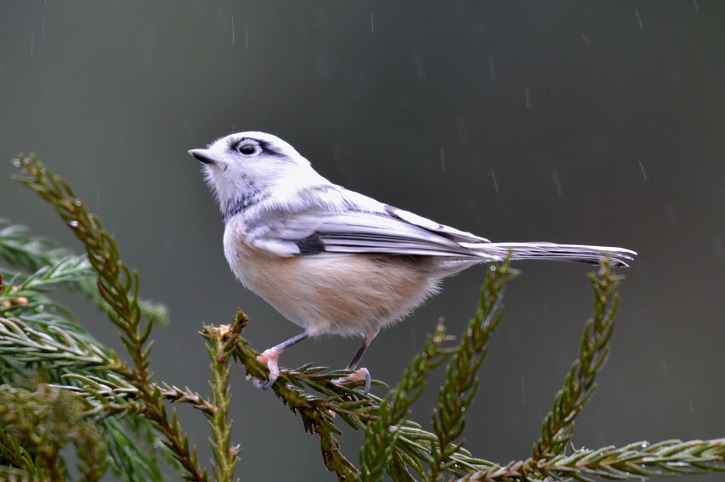In case our readers are tired of the endless news stories about the yellow Northern Cardinal in Alabama, a surprising color variant of a Black-capped Chickadee has shown up recently in our home state of Massachusetts.
A private homeowner in Charlton sent us some pictures of the bird, which was coming to her feeders.

©Laurie Dearnley

A partially leucistic Black-capped Chickadee in Charlton. ©Laurie Dearnley
In some ways, this bird looks more like a tit from the Eurasian genus Cyanistes—a group very closely related to North America’s chickadees.
However, Wayne Petersen and David Sibley confirmed that this bird’s body shape and plumage is indeed consistent with a partially leucistic Black-capped Chickadee.
What is Leucism?
Leucism is a genetic condition that prevents a bird’s body from depositing pigments in feathers, leaving some parts of the bird white or paler than normal. Leucism is not to be confused with albinism. Albino birds only lack a single pigment (melanin) responsible for producing blacks and browns, but the issue is not getting the pigment where it needs to be—albino birds simply do not produce melanin at all. While these birds end up with no black or brown anywhere (even in the eye!) they might retain other colors like reds and yellows. In leucistic birds, any or all colors could appear paler than normal, but their eyes (and often their skin) will be dark.
This bird is particularly fascinating because while it has retained some pigment in its feathers and its legs are partially dark, its toes are pink and unpigmented. Normally, a bird with partially pigmented feathers will have full pigmentation on its bare parts. Transporting pigment to living tissue (skin) is biologically easier than to dead tissue (feathers). It’s quite rare for a bird with partial leucism to have bare parts that are pale, and even rarer for a bird’s bare parts to be half dark and half pale.
Bird Pigments: Form Meets Function
Pigments often serve vital functions for birds beyond what we might expect. Feathers with melanin, for example, are stronger and more resistant to wear and tear than unpigmented feathers. This may be why some birds, like many gulls, have black outer edges on their otherwise-white wings. Female birds may also read certain plumage traits to indicate the physical health of potential mates. Several studies have correlated bright pigmentation with healthy immune systems in species from Zebra Finches to Red-winged Blackbirds (although never any chickadee species), and many birds with aberrant plumage show decreased mating success. Finally, birds with abnormally pale feathers tend to stick out visually, and run a greater risk of predation.
But even if this particular Black-capped Chickadee has a difficult (or short) life ahead of it, we think it’s beautiful just the way it is.

